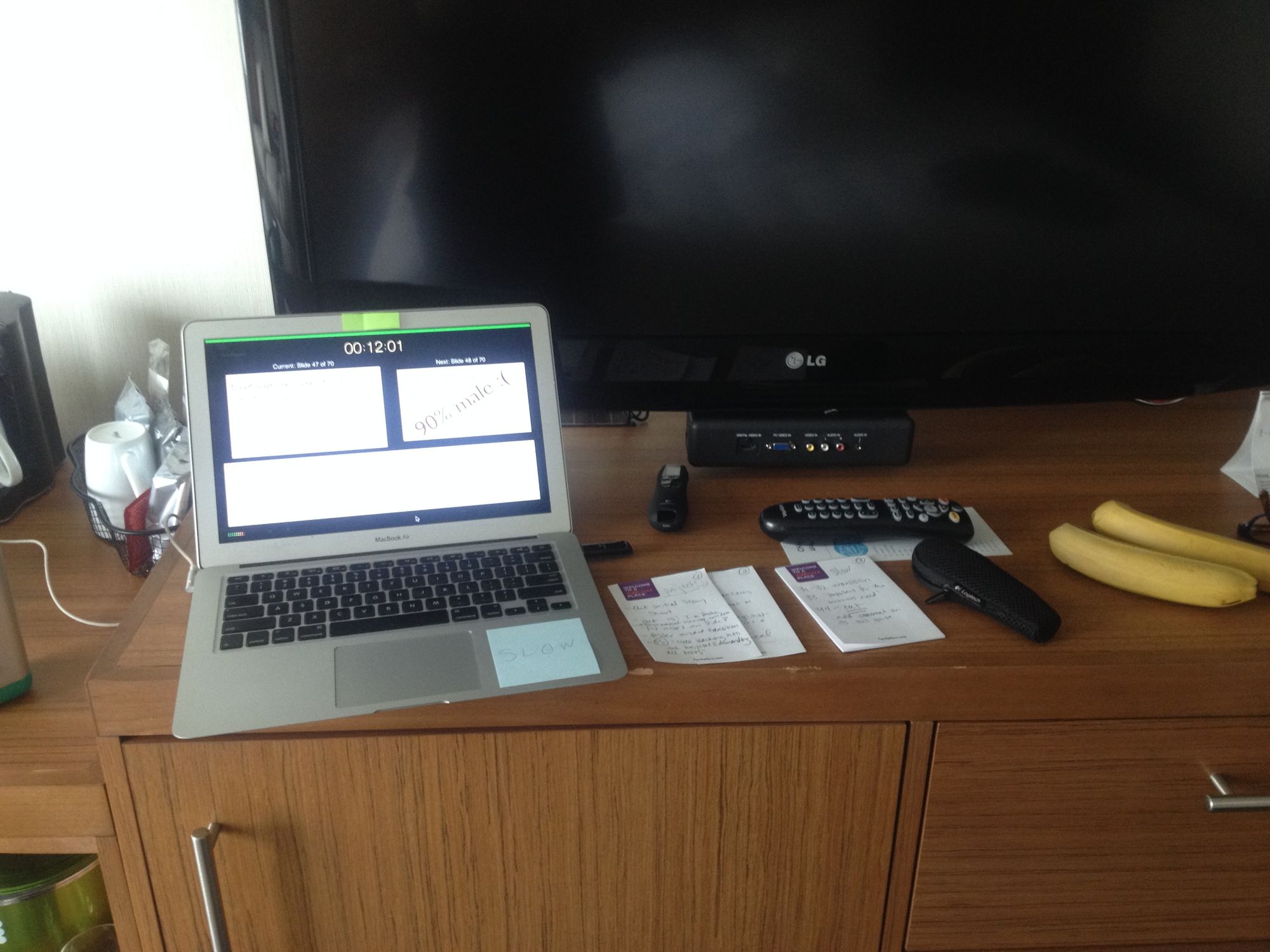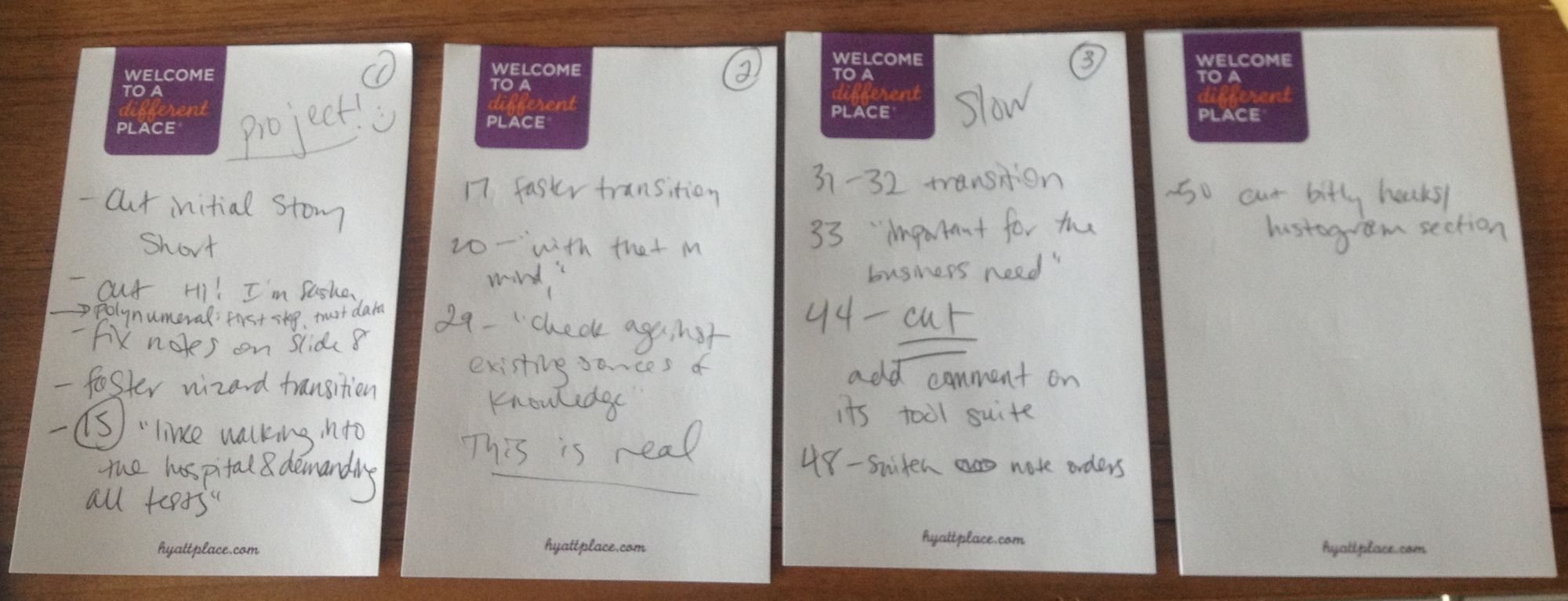Last week, I gave a talk at Strata, O'Reilly's data science conference. Every time I give a talk I get a little bit better at it. I've seen a lot about how to propose talks and prepare slides, but less written about preparing right before your talk. Here's what I've figured out works best for me. I'd also really love to hear from you about how you prepare!
Part of my motivation for a behind-the-scenes post like this is that beginners compare polished final products to their own messy work and then they are sad. It is important to know that behind every polished talk there is no magic, just messy work! Lots and lots of messy work.
So here is my messy work—some things I did this time that worked well.
First of all, I signed up to give the talk beforehand at a different conference in my hometown. This forced me to prepare months ahead of time and I was able to gather some helpful feedback. This is a GREAT idea and I plan to do it as much as possible.
By the time I was getting on the plane, I had already created 80% of the slides I needed. So in the 24 hours before the talk, here's how I prepared:
I paged through my old slides and decided what sections to cut out. I needed to cut the talk from 30 minutes to 16 minutes, and some pieces of it were 'nice to have' but not critical to my main points. I left placeholders where I thought I needed to add slides. It's really tempting at this point to fuss with the slides forever. Resist!
I immediately did a live runthrough! I just stood up and started talking over my slides as if I were presenting for real. This was so awkward at first but a few minutes in I was sailing! There were some rough spots but never as many as I expect, which made me feel really good! A large part of being prepared is managing your own emotions so this is actually really important!

I used Keynote to record this runthrough, which is very easy to do (I love Keynote).
I then listened to it and noted rough spots: places where I rambled, tough transitions, and slides that need to be adjusted or removed.

At this point, I paid closest attention to the transitions. At this point the slides were pretty set, but what went between them was a little rough. I like each slide to be set up by my words before it comes on, and transitions are absolutely key to continuity. I sometimes left extremely brief notes to myself in all caps in the presenter notes just in case I brainfarted on stage.
When I did this rough runthrough, I did it standing up and with my clicker. I tried to picture the conference room in front of me. That way, wouldn't be as surprising to walk up on stage and I could be nice and calm during the real thing.
I made sure I knew how to get presenter tools to appear when I plugged my computer into the big screen. Hint: you need to know the menu-bar-dragging trick in Display Preferences.
I wrote a little stickie that said 'TALK SLOWLY :)' and put it next to the keyboard on my laptop.
I made PDF copies and put backups in Dropbox, just in case my laptop met a watery end at lunch.
I made a quick little landing page for the talk. I pointed to it from the top of my website and a pinned tweet so people could find it easily during the talk, and I added useful stuff to it right away. The bulk of your audience may not even be in the room so this is a great way to get the most value out of your talk. For example, there were about 30 people heard me deliver my PyData NYC talk and over 1,000 have watched the video on Youtube.
And of course, I power posed :)
This is what I've found to work for me for prepping in the 24 hours before the talk. What works for you?